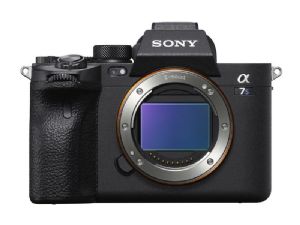
Sony A7S III | IMAGINATION IN MOTION
A week may be a long time in politics, but 5 years in digital camera development is a lifetime. A lot has happened since the A7s II burst on to the scene in September 2015.
Key Features
- 12.1 MP BSI full-frame Exmor R sensor
- BIONZ XR image processor
- Video recording up to 4k120p
- 15-stop wide dynamic range
- 759 phase-detection AF points
- 16 bit RAW video output via HDMI
- 5.5 stop in-body image stabilisation
- Large Battery Capacity (Z battery)
- Dual card stots with dual compatibility (CFexpress Type A and SD UHS-II)


With the A7s III featuring only a 12-megapixel (albeit all-new) sensor, this may not be your first choice as a stills camera. Despite the legendary low light/high ISO capability of its predecessor, its performance has been eclipsed by higher resolution models in the interim. No, this is clearly aimed at videographers.
And for videographers this camera is not going to disappoint. Forgoing the sensational headline of 8K recording, the Sony A7s III delivers a solid usable 4K recording up to 120p 4.2.2 10-bit internally and can output 16 Bit RAW video via a full-size HDMI connection to an external recorder like the Atomos.


The brand new BIONZ XR processor has double the readout speed of the Mark II and is 8 times as fast as the BIONZ X processor in the A9 MKII and A7R IV. Plus in conjunction with the new sensor the A7s III boasts a 15 stop dynamic range.
The Autofocus has also been beefed up with a super-fast 0.02sec AF with 759 on-sensor phase-detection AF points. The ISO range stays the same starting at 80 and going all the way up to the black-cats-in-a-coal-cellar level of 409,600.
The A7s III bins pixel binning, as for the first time in a Sony Alpha mirrorless camera it has a full pixel readout. There is a slight crop of 1.1 in 4K recording but that is likely to be because the 3:2 format of the sensor does not translate well to the 4K ratio.


The new XAVC-HS (H.265) and new XAVC-S-I (All-I) codecs 16 Bit RAW data output, S-Log profile indicates this is designed for a professional workflow and the Z battery deliveries an extended operating time.
In body stabilisation is now 5.5 stops plus it includes a new active mode (as seen on the latest RX100 cameras) which you can turn on when even more stabilisation is needed.
The EVF is a phenomenal 9.44 million dot OLED beast of a viewfinder giving a real-world immersive view.


The tilt and flip LCD screen is worth mentioning as it is the first on an Alpha mirrorless camera and the touchscreen is responsive and intuitive. The new menu system now has colours to differentiate the sections but even more usefully it gives a sneak peek view of the sub-menus so that you don’t have to memorise which section the function you require resides in. In general, this camera keeps up the trend that Sony cameras have been following over the last few models, that of offering better ergonomics and usability.
The camera features two card slots both of which can accept SD UHS-II cards or CFexpress Type A cards – of which none have been made yet. Sony says they will be releasing their first CFexpress Type A cards in September but no prices have been announced. Other manufactures I am sure will follow.

Sony A7S III Full Frame Mirrorless Camera Body
Sony Summer Cashback - Claim £200 cashback from Sony - OFFER ENDS 31/07/2025- Professional Hybrid Camera for Stills & Video
- 12MP Full-Frame Exmor R BSI CMOS Sensor
- UHD 4K 120p Video, 10-Bit 4:2:2 Internal
- 16-Bit Raw Output, HLG & S-Cinetone
- 759-Point Fast Hybrid AF
- 9.44m-Dot QXGA OLED EVF
- 3.0" 1.44m-Dot Vari-Angle Touchscreen
- 5-Axis SteadyShot Image Stabilisation
- Extended ISO 40-409600, 10 fps Shooting
- Dual CFexpress Type A/SD Card Slots




